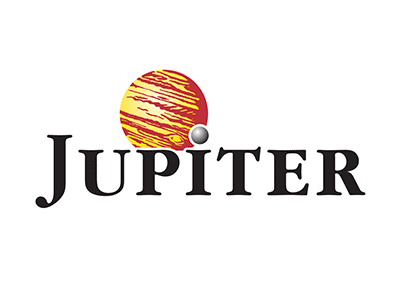- Ariel Bezalel is a high profile, talented manager who has decades of experience of investing in bond markets
- We think that managers at Jupiter are given autonomy to invest how they see fit
- The fund provides diversified exposure to different types of bonds
- This fund is on our Wealth Shortlist of funds chosen by our analysts for their long-term performance potential
How it fits in a portfolio
The managers aim to generate a combination of income and capital growth in excess of the Strategic Bond sector average over the long term. The fund invests in different types of bonds from all over the world, meaning it could be used as the foundation for the bond portion of a portfolio or could add some diversification to a portfolio focused on shares.
Manager
The fund is co-managed by Harry Richards and Head of Fixed Income at Jupiter, Ariel Bezalel. We think Bezalel is a talented and experienced bond manager who has added value for investors compared to the peer group since the fund launched in 2008. He has managed the fund since inception and has worked at Jupiter since 1997. Bezalel was joined by Harry Richards in 2013 when he began working on the fund as an analyst. He became assistant fund manager in 2016 and co-manager in May 2018. Richards now has over a decades’ worth of experience having joined Jupiter in 2011. The managers also have other fixed income responsibilities, but we think they have the support and resources to do a good job for investors.
Process
Bezalel and Richards analyse the state of the economy and use this to help them decide where to invest. This involves taking a view on which direction interest rates will move in developed markets to build up a picture of how the economy will evolve. Although the managers can invest in bonds from around the world, at least 70% of the fund must be invested in bonds that are bought and sold in British pound sterling or hedged back to sterling. They can also use derivatives which if used increases risk.
Bezalel and Richards are willing to take more risks when they’re positive on markets. So, at times they will increase their investments in higher-risk areas like emerging markets and high-yield bonds. But when the outlook is more uncertain, they can adopt a more defensive approach and might invest more in government or higher quality corporate bonds in an effort to help shelter the portfolio from large drops in value.
The fund typically has what is called a ‘barbell’ approach. This means they have a lot invested in highly rated government bonds as well as a lot in lower rated, higher risk, corporate debt (called high yield). They don’t tend to invest much in the middle of the risk spectrum so their holdings in investment grade corporate debt tend to be small.
At the end of August 2023, they had 50.9% invested in developed market high yield debt and 23.2% in developed market government debt. They also had 11.9% in emerging market debt, made up of a combination of government and corporate bonds.
The fund’s duration currently stands at 9.0 years, having increased from 7.8 years at the end of July 2022. Duration is measured in years and reflects how sensitive the fund is to interest rate changes. The higher the duration value, the more sensitive the fund is to interest rate changes.
The managers have increased duration over the 12 months to August 2023, because they are expecting interest rates to stop rising and start falling again. If this turns out to be correct, having a higher duration position could add to future returns. However, there are no guarantees this will happen, and it could detract from performance if interest rates rise more than expected.
Overall the managers are mindful of a number of risks and expect the UK and other developed markets to go into recession in 2024. A recession is when the economy shrinks in size for more than two quarters in a row. While they are confident there will be a recession, how bad it will be and when it may happen are the points of debate amongst the team at Jupiter.
Culture
The fund managers at Jupiter are given autonomy to invest the way they see fit. They believe this will benefit investors over the long run, but the autonomy comes with an appropriate level of challenge from others in the business. This business setup allows Bezalel and Richards to focus on fund management, their team, and maintain flexibility.
Fund managers at Jupiter are incentivised in line with the performance of their funds over various timeframes. We think this aligns their interests with those of investors and helps the managers to focus on delivering strong performance for clients.
ESG Integration
Jupiter’s approach to ESG is fund manager led, so the fund managers themselves are responsible for implementing ESG in their investment analysis. While managers are given freedom in how they incorporate ESG into their investment decisions, they are frequently challenged on their ESG analysis by an in-house Governance & Sustainability team.
We like that the fund managers are not being forced to adopt ESG policies that they may not agree with or may not fit with their investment style.
Ariel and Harry have incorporated ESG factors into their analysis and have an ESG materiality risk score for all bonds that they assess. They have also launched additional products where exclusions based on ESG criteria have a bigger impact on what bonds they invest in. Overall it is good to see that the managers are taking ESG risks seriously and do incorporate these into their bond selection. For this particular fund though, the risk-return profile of potential investments is the most important thing.
Cost
The fund has an annual ongoing fund charge of 0.73%, but through Hargreaves Lansdown you can secure an ongoing saving of 0.19%. This means you’ll pay an ongoing charge of 0.54%. Part of this reduction is paid as a loyalty bonus, which could be taxable if held outside of an ISA or SIPP wrapper. The HL platform fee of up to 0.45% a year also applies.
Performance
The fund's flexible approach has meant that since inception in 2008 it has outperformed its peer group. Over this time, the fund has delivered a return of 96.3%* to patient investors, compared with a return of 88.0% for the IA £ Strategic Bond peer group**.
The fund has historically outperformed during falling markets, sheltering its value better than others in the sector. This wasn’t the case during the significant bond market falls in 2022 though, where the fund lost 15.58% compared to the sector average fall of 11.73%. The flexibility afforded to the managers means the fund often performs differently to peers. Past performance is not a guide to the future.
Over the past year to 31 August the fund has lost 2.14% compared to the IA £ Strategic Bond average return of 0.35%. The biggest losses within the fund came from the developed market government bonds they hold. As interest rates have continued to rise, these bonds have lost value. The increase to the fund’s duration position noted earlier has also hurt performance as interest rates have risen. While there were some positive returns from emerging market debt and investment grade corporate bonds, these were not enough to offset the losses from the rest of the fund.
Over five years to 31 August 2023 the fund has also underperformed the sector’s peer group average, losing 0.29% compared to a gain of 3.55%. While this is disappointing, it has been a challenging time to invest in bond markets. During that five year period there have been times when the fund was ahead of the sector’s peer group average by similar amounts. We think the fund continues to provide something different and offers diversification to investments in company shares.
While there are no guarantees how the fund will perform in future, Bezalel and Richards have significant experience in a sector where experience counts.
At the end of August, the fund offered a current yield of 6.13%, although yields are variable and aren’t a reliable indicator of future income.
** Please note that this data is for Class L units in order to show performance since the fund was launched. The performance noted below is using Class Z units, which are available to investors with HL and have lower ongoing charges.
Annual percentage growth
| Aug 18 - Aug 19 | Aug 19 - Aug 20 | Aug 20 - Aug 21 | Aug 21 - Aug 22 | Aug 22 - Aug 23 | |
| Jupiter Strategic Bond | 9.41% | 2.66% | 4.40% | -13.11% | -2.14% |
| IA £ Strategic Bond | 6.47% | 3.23% | 5.64% | -11.12% | 0.35% |
Past performance isn't a guide to the future. Source: *Lipper IM to 31/08/2023.


